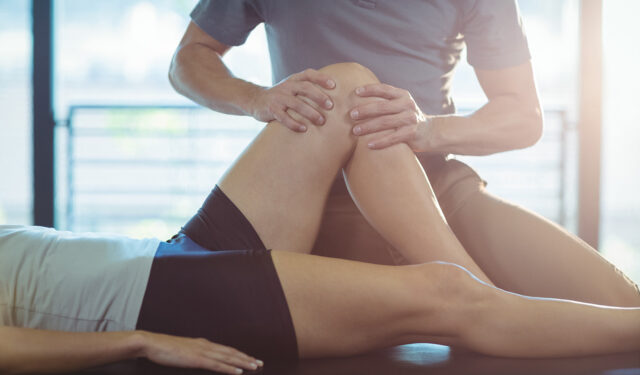What Are The Symptoms of Osgood-Schlatter’s Syndrome
Symptoms can vary depending on how severe the condition is. Common signs include:
Pain in one or both knees
Pain when straightening the leg or squatting
Pain during running, jumping, or stair climbing
Swelling and tenderness over the tibial tuberosity
Redness or warmth over the bump
Muscle weakness in the thigh (quadriceps)
The pain usually improves with rest and worsens with activity.
Long-Term Effects and Complications
If left untreated, Osgood-Schlatter’s Syndrome can lead to:
Permanent bump below the knee
Free bone fragments (ossicles), which may require surgery
- Altered kneecap alignment, possibly increasing the risk of future knee pain
The quadriceps tendon pulls on the tibial tuberosity during physical activity. In some cases, the pull is strong enough to cause a partial fracture at this growth center. As the body repairs the area, it lays down extra bone tissue, leading to a permanent bump.
Why Does the Bump Develop?
The quadriceps tendon pulls on the tibial tuberosity during physical activity. In some cases, the pull is strong enough to cause a partial fracture at this growth center. As the body repairs the area, it lays down extra bone tissue, leading to a permanent bump.
Diagnosis and Assessment
Many children with this condition report a previous knee injury. A thorough physical exam is essential. Chiropractors assess the entire lower limb, pelvis, and spine to check for biomechanical issues.
To rule out more serious conditions, your chiropractor may recommend:
Chiropractic Treatment Options
Treatment focuses on relieving symptoms and preventing further injury.
Initial Phase (Pain Relief)
Rest and ice therapy to reduce inflammation
Manual therapy, including:
Low-Level Laser Therapy (LLLT) to speed up healing and reduce inflammation
Recovery Phase (Rehabilitation)
Once symptoms ease, patients begin a guided exercise program to:
Stretch the quadriceps, hamstrings, and calf muscles
Strengthen supporting muscles around the knee
Return to Activity
When the knee is no longer tender:
How Long Does Recovery Take?
Most cases resolve on their own within 12 months. However, some patients experience discomfort for 2–3 years, especially if they stay active during their growth spurts.
Early diagnosis and proper treatment can significantly shorten recovery time and reduce the risk of long-term complications.
Why Choose Chiropractic Care?
Chiropractic care offers a holistic approach that looks at the entire body, not just the knee. In our experience, early treatment can:
If your child is experiencing knee pain, especially during or after sports, book an appointment with a chiropractor today.
